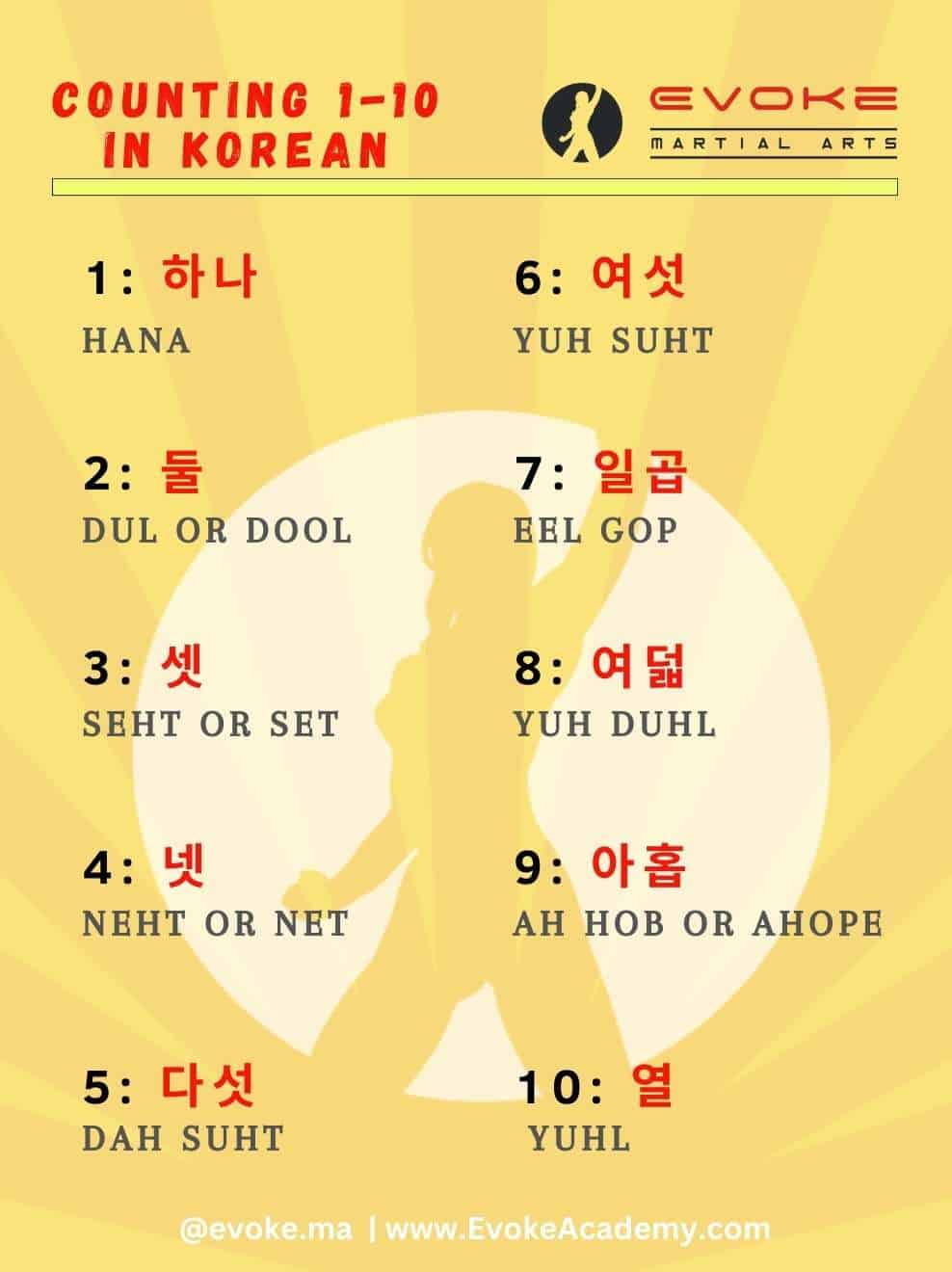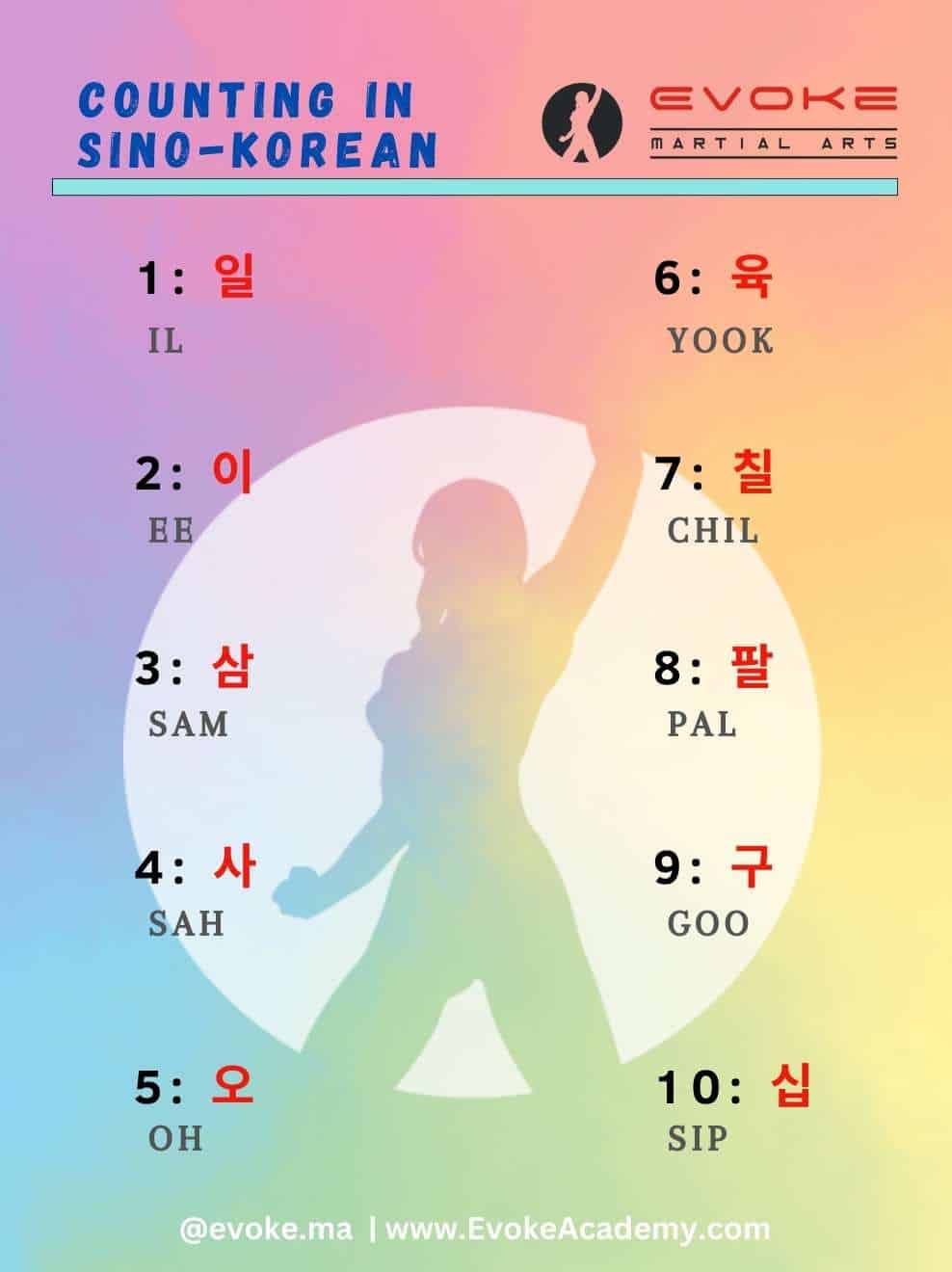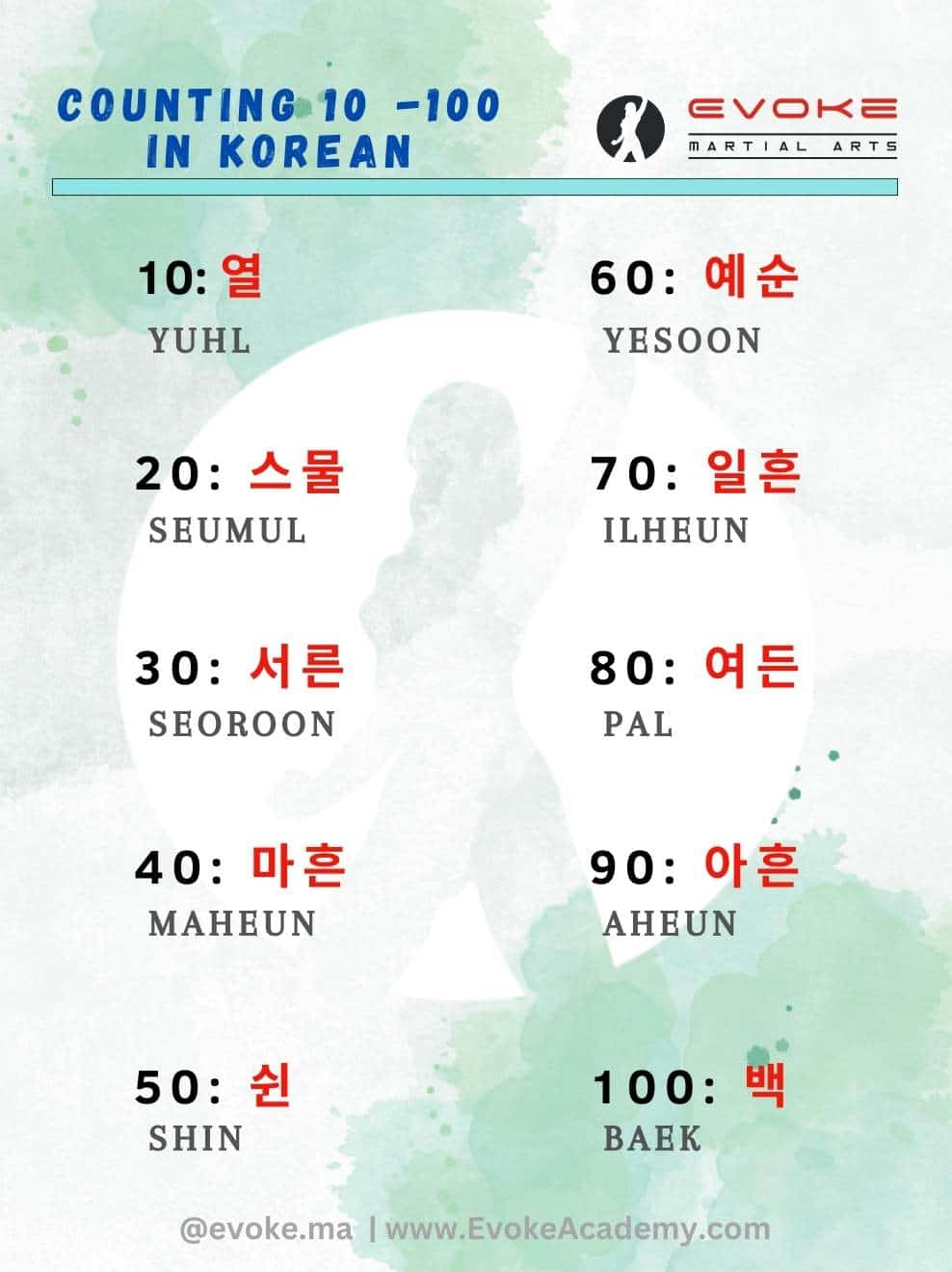
Learning how to count in Korean is quite simple, and not as challenging when compared to other Asian languages like Japanese, Mandarin, or Cantonese.
Counting in Korean, like any language, just takes a little practice and repetition to get proficient in no time.
How to count in Korean
Keep in mind that there are actually two ways to count in Korean. There is the native Korean number system (hangul) and the Sino-Korean number system (hanja).
Each version is used and applied depending on the context. The differences will be illustrated later below.
Counting in Korean | 1 – 10
Let us start by learning how to count to 10 in the native system.
- 1: 하나 (Hana or Hah nah)
- 2: 둘 (Dul or Dool)
- 3: 셋 (Set or Seht)
- 4: 넷 (Net or Neht)
- 5: 다섯 (Dausut or Dah suht)
- 6: 여섯 (Yeosut or Yuh suht)
- 7: 일곱 (Ilgup or eel gob)
- 8: 여덟 (Yeodul or yuh duhl)
- 9: 아홉 (Ah-hope or ah hob)
- 10: 열 (Yuhl)
How to pronounce Korean Numbers
Counting to 10 in the Sino-Korean System (Hanja)
The writing system of many Asian countries such as Japan and Korea were influenced by China. Originally, Korean language used Chinese characters prior to creating their own native writing system. This is how the Sino-Korean counting system came about.
Here is how to count in Korean using the Sino-Korean:
- 1: 일 (il)
- 2: 이 (Ee)
- 3: 삼 (sam)
- 4: 사 (sa)
- 5: 오 (oh)
- 6: 육 (yook)
- 7: 칠 (chil)
- 8: 팔 (pal)
- 9: 구 (goo)
- 10: 십 (sip)
Counting the multiples of 10 in Korean
Once you have learnt how to count up to ten, the next step is to learn the multiples of 10 – 20, 40, 50, 60, 70, 80, 90.
When counting past 10 in Korean, you simply combine the multiples of 10 as the suffix to the number between 1 and 10.
For example, 10 is Yuhl (열) – so 11 would be Yuhl Hana (열하나), 12 would be Yuhl Dool (열둘), 13 is Yuhl Seht; and on and on. The same would apply to 20, 30, 40, etc.
Korean Numbering System in Martial Arts
When accounting for first, second, third, fourth, etc. in Korean martial arts; like say – first Dan Black Belt, or Third Degree Black Belt – the Sino-Korean system is common method used to count in Korean.
The Black Belt Dan rank levels would be numbered in Korean as Il Dan, Ee Dan, Sam Dan, Oh Dan, etc.
Practicing your Korean is really simple, and happens even more naturally when studying martial arts. We incorporate Korean terminology into our Hapkido training. So it’s only natural to become proficient at counting, and pick up more Korean words through the course of one’s training.
About the author : admin

Achieve a leaner, stronger, and more alive body while developing amazing self protection skills.
Achieve a leaner, stronger, and more alive body while developing amazing self defense skills.
Training at Evoke has been a truly wonderful experience. As an adult engaging in martial arts for the first time, the environment has been ideal. All of the instructors have been motivating, knowledgeable, and supportive. The classes offer a great workout and a chance to feel a little bit badass. I look forward to continuing the journey!







